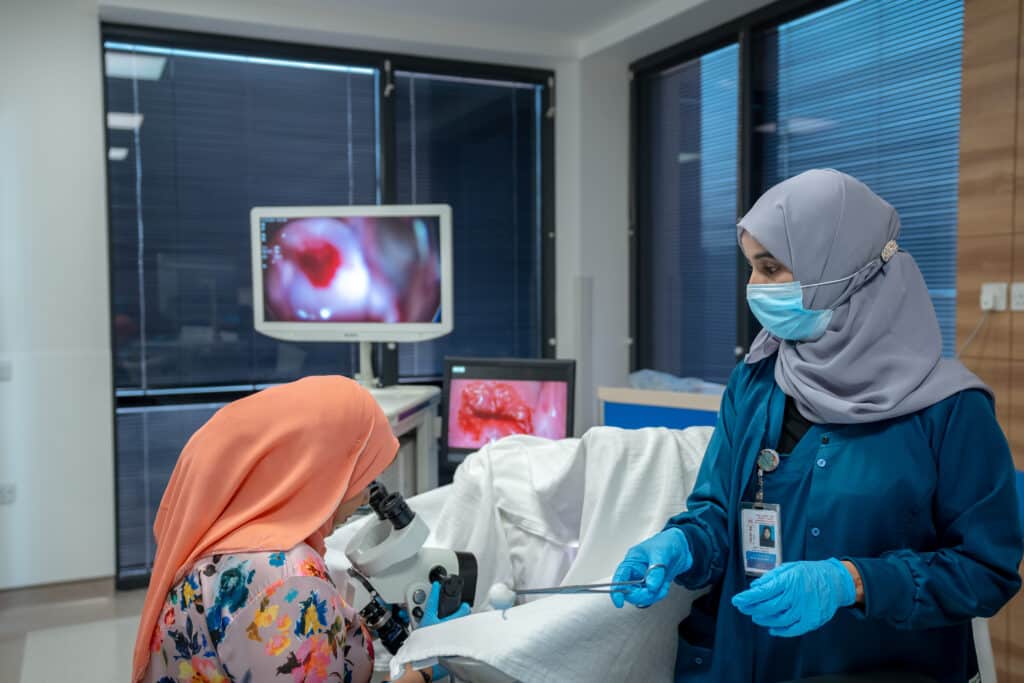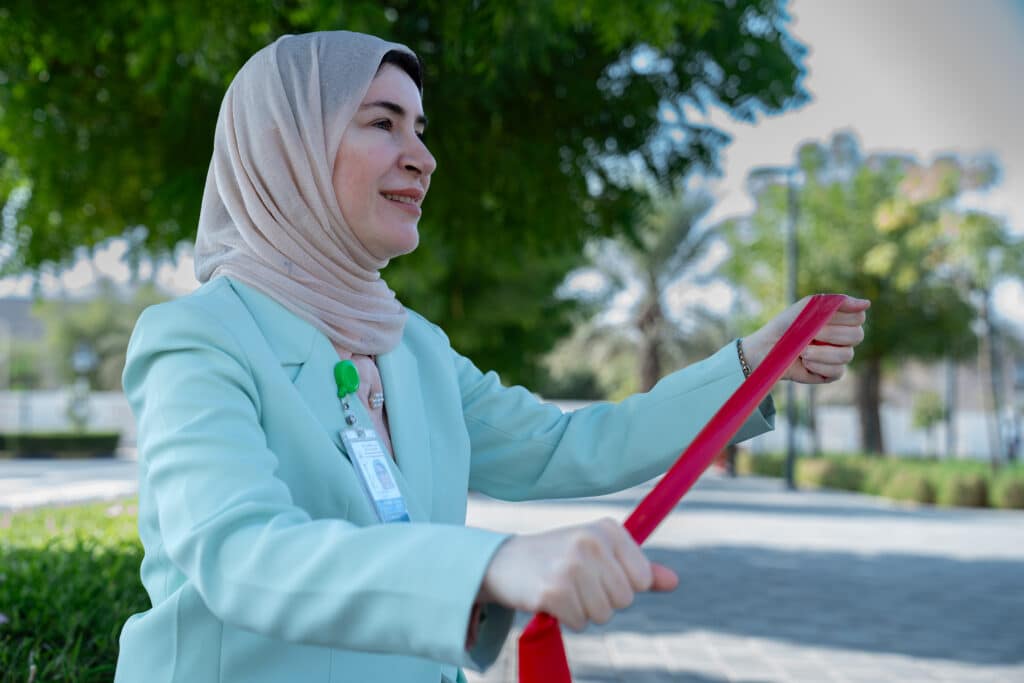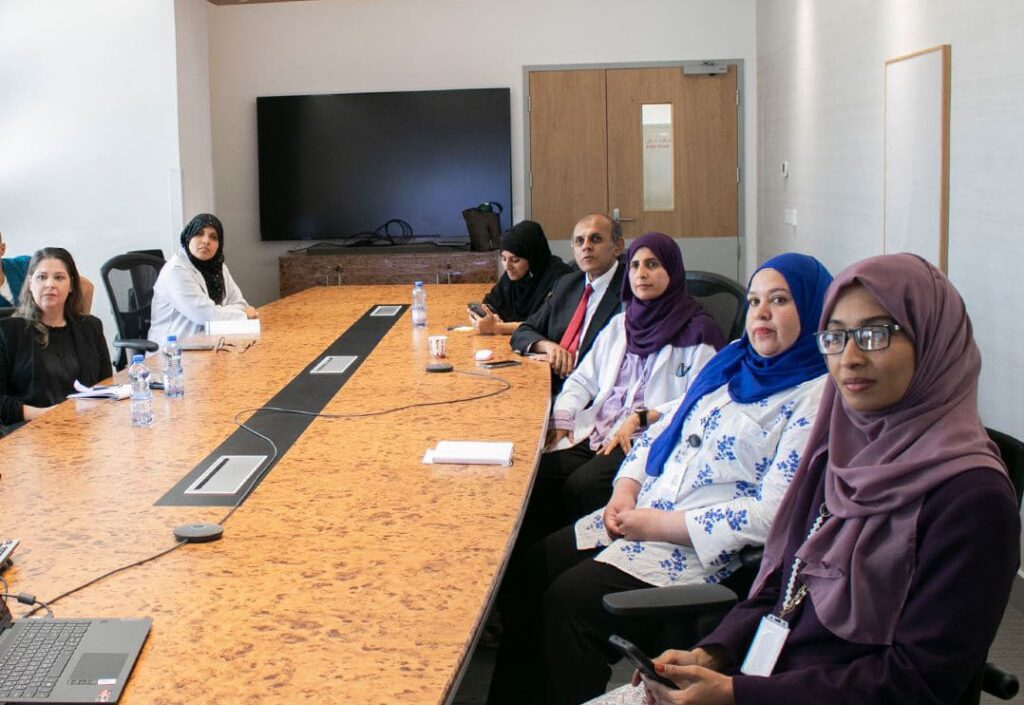


As we celebrate the World Cancer Day this 4th February 2024, Sultan Qaboos Comprehensive Cancer Care and Research Center, (SQCCCRC) continues to exert its ongoing efforts to combat cancer and reduce its impact on individuals and communities around the world. SQCCCRC’s approach to cancer prevention and care is the essence of celebrating World Cancer Day. The Center’s initiative aimed at raising awareness about cancer, promoting early detection, prevention and treatment, and advocating for improved access to health care services for cancer patients understanding the inequities in cancer care and making the necessary progress to address them.

Worldwide, January is observed as Cervical Cancer Awareness Month. It is an excellent opportunity for the staff of Women Health Program at SQCCCRC to write a few lines to raise awareness about cancer of the cervix amongst community in Oman. Cervical cancer is preventable, while it develops, it can be detected early through screening, and if diagnosed, is one of the most treatable cancers, provided it is detected early and managed effectively. Cancers diagnosed in late stages can also be controlled with appropriate treatment and palliative care. Generally, the public is not aware of the scientific and medical developments in prevention, screening, and management of cervical cancer, hence, this article is intended to increase awareness about these aspects of cervical cancer.

Gynecological cancers have been increasingly seen as a public health concern due to several factors which are linked to the global rise in the incidence rates, the late presentation of the disease, and the high number of relapses. Additionally, the unique nature of the disease itself involving the most intimate female organs put an additional psychological burden on these women.

On occasion of the Gynecological Cancer Awareness month, the Gynecological Cancer Program team at the Sultan Qaboos Comprehensive Cancer Care and Research Center (SQCCCRC) organized an online webinar, titled “Integrated care of gynecological Cancers”.
Gynecological Cancer Awareness month is observed throughout the world in the month of September, with the aim to raise awareness about the common, but often neglected cancers. Gynecological cancers accounts for the 5th most common form of cancer.

Physiotherapy focus on movement science helping individuals to maintain and maximize their physical strength, range of motion, functional and overall well-being. Also, physiotherapy interventions have been proven to be effective in addressing major complications of arising from gynaecological cancer, or its treatment. Furthermore, physiotherapy plays an important in the survivorship program of patients diagnosed with gynaecological and other cancers.

Clinical staging is used to determine the extent and spread of cancer within the body before treatment starts. The location from where the cancer originates is called the ‘primary site’. The extent to which the tumor has spread at the time of diagnosis is called ‘clinical stage’ in medical lexicon. At the time of diagnosis, the cancer may be localized to the primary site, may have spread locally, or may have spread to involve distant sites and organs. The staging system provides information for planning treatment and predict the prognosis.

The diagnosis of any cancer is established on biopsy material. A biopsy is obtained from the tissue or organ where cancer is suspected. The biopsy material is then processed and subjected to examination under the microscope. Biopsy not only provides the diagnosis، but also informs the physicians of several other important parameters pertinent to medical care، such as the type of cancer، its grade، the degree of differentiation، the likely biological behavior of the tumor، ie. slow growing or rapidly progressing، and prognostic factors. Prognostic factors refer to features which help predict the likely course of the disease.

In this article, methods of prevention of gynecological cancer are described. Measure for prevention of cancer can be described as:
Primary prevention, (applicable to all individuals)
Secondary prevention (applicable to people at high risk of getting the cancer).
Tertiary prevention, (prevention of cancer once the cancer is successfully treated).

GY team discusses recent Advances in the Management of ovarian Cancer The Gynecology Oncology Program team at SQCCCRC organized a continuing Medical Education (CME), entitled “Recent Advances in the Management of ovarian Cancer”. The Webinar was a live event, attended by more than 75 participants from several countries, mostly Oman, and was accredited by the Oman medical Specialty board …

Input your search keywords.